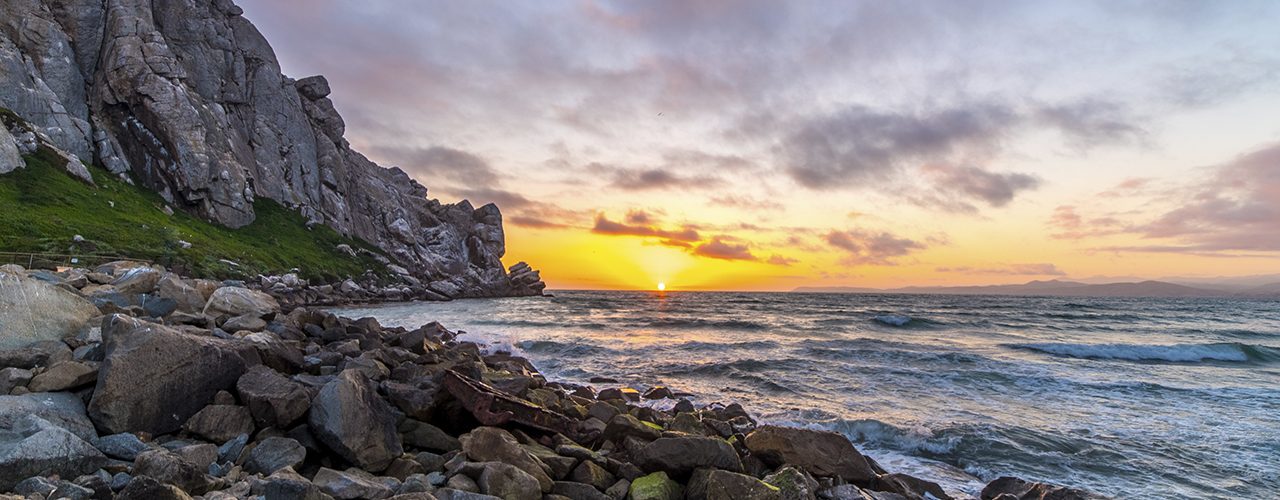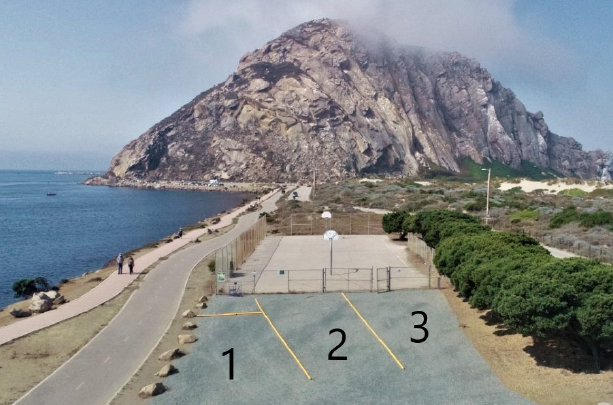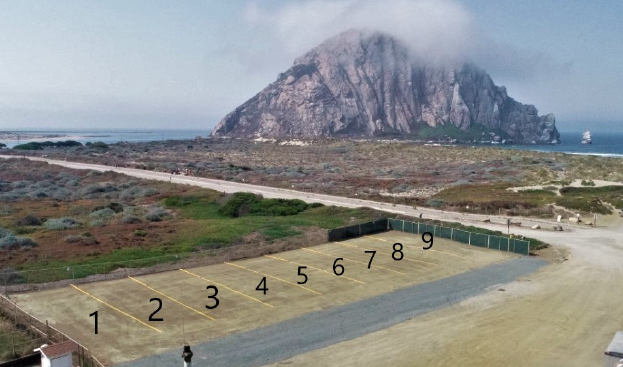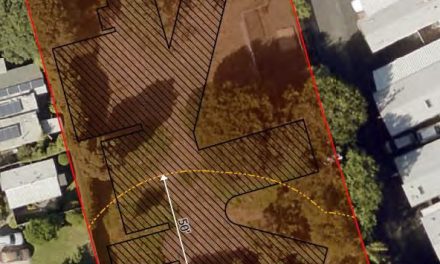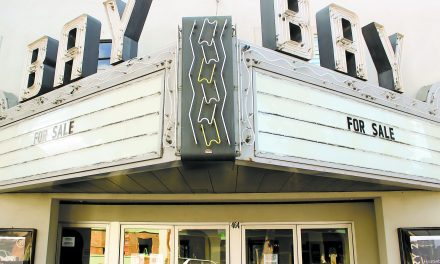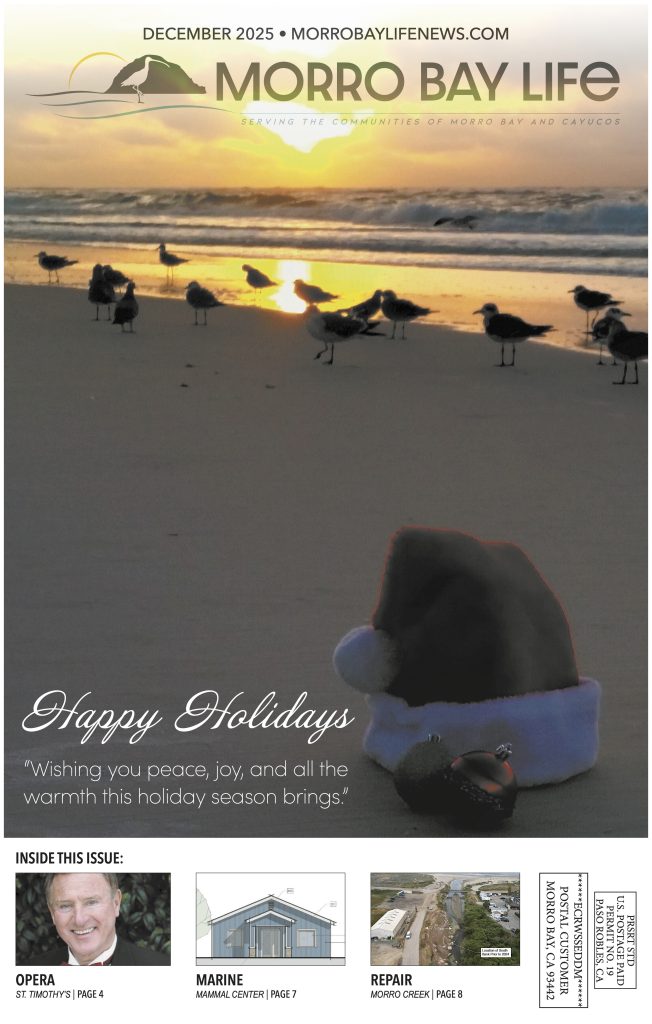MORRO BAY — The Morro Bay City Council voted to extend and expand a new waterfront RV camping program that the Harbor Department put together last fall, authorizing the pilot program through the end of September.
Harbor Director Eric Endersby told Morro Bay Life that the extension was, “So we can get a full year under our belts, that way we have good data on how it works and pencils.”
The RV camping idea was hatched in April 2019, according to Endersby’s staff report. The initial recommendation was for six sites: Target Rock; Coleman Park parking lot; Morro Creek near the Harbor Department’s storage building; at The “Pit” open areas by Morro Dunes trailer/RV park; in the Triangle parking lot near the Maritime Museum; and in the public boat launch ramp parking lot.
The Harbor Advisory Board liked the idea but nixed putting in spaces near Morro Rock. It went to the City Council and got a go-ahead.
The department next received approval for a temporary, emergency permit from the Coastal Commission for a “pilot program” that was slated to expire in March.
The Commission was sympathetic with the Harbor Department’s drastic drop in revenues caused by the Governor’s COVID-19 business closure and stay-at-home orders.
In addition, the City Council delayed lease payments from waterfront businesses until after the summer ended to ease the burden after the loss of income.
Another plus is that the Commission considers RV and tent camping to be low-cost accommodations and thus desirable under the Coastal Act. The Commission also conditioned the program to also have spaces available for tent camping.
In the end, the Harbor Department picked three sites — Coleman Park (three spaces), the Triangle Lot next to the Maritime Museum (seven), and the former maintenance yard by Morro Creek (nine) for a total of 19 spaces.
Overnight prices varied depending on the location, with Coleman Park going for $75 a night, considerably higher than other RV parks in town, including the State Park campgrounds.
They also developed plans for a few spaces down by the public boat launch ramp reserved for sport fishermen who haul their boats to town behind an RV. But that site hasn’t been used yet. Fishing season opens again in April. Once it’s established, the spaces can be rented by anyone after the fishing season closes in December.
It took quite a bit of lead-up work to get the program started last September.
“Over the summer of 2020,” Endersby reported, “Harbor Department staff developed the program to include the creation of rules and regulations for site users, an online reservation system [the same subscription program system, ‘Bonfire,’ used by Port San Luis’s RV program], professional program graphics and site signage and site improvements and amenities.”
It should be noted that these are “dry camping” spaces, as in the City hasn’t provided electricity, water, or sewer hookups, as one might expect from a modern RV park.
Over the three months it was working, Endersby reported gross revenues of $32,200, but if COVID hadn’t shut it down early, he said they may have been able to receive another $4,500 in December-January.
The RVers also paid the City $3,200 in transient occupancy taxes (a 10 percent charge), and they collected $485 for the County’s Tourism Marketing District (a 1.5 percent charge).
As for expenses, he listed $1,000 for credit card fees; $1,500 for an annual subscription fee to the online reservation system, Bonfire; $30,000 in expenses, primarily one-time start-up costs (landscaping/hardscaping, signage, graphics, reimbursement of the Recreation Department for services rendered).
He added that the City is supposed to transfer $10,000-$15,000 from the “Low-Cost Accommodation Fund” to help offset the initial start-up costs.
That low-cost fund is paid by developers of motels who don’t want to have some of their rooms forcibly rented at a discounted rate, currently set at $149 a night, according to the rates the new Inn at Rose’s Landing had to set for its required two “affordable” rooms.
Once the City transfers the low-cost monies, Endersby said their net profits over the three months is $6,000-$11,000.
Apparently pleased with the success, the Council voted to extend the pilot program and also added a few spaces at the base of Morro Rock near the fence to the power plant outfall canal.
This might prove sticky if Native Americans, who consider Morro Rock a sacred site, object.
“Out of respect for the two local tribes and the potential Rock sites,” Endersby said, “I have reached out to the Salinan and Chumash for their input before we do anything out there. I have received initial responses and will be engaging with them as they get feedback from their respective councils.”
The Native Americans aside, many Morro Bay residents were dead set against the RV camping program, period, with dozens of emails being sent to the Council before the meeting.
A handful of people were supportive but somewhat wary of some aspects, in particular the Coleman Park campsites, which are right next to the Harborwalk bike path. But those three campsites were the most popular.
The Department also asked its customers about their experiences and if they’d come back again? Those form letters were included in the agenda packet. When asked about it, Endersby said, “We are obviously supporters of the program, and yes, we solicited input from our customers.”
Those customers came from all across California, including a few people who were escaping wildfires and from other states as well.
Endersby noted that they would have to go back to the Coastal Commission because their temporary permit expires towards the end of March. And if they want to make it a permanent program, they’ll need a full-blown Coastal Development Permit (CDP) that would be under the original jurisdiction of the Coastal Commission.
“The Council did not OK making the program permanent,” Endersby told Morro Bay Life, “but we will have to do something with our emergency Coastal permit we have now. I have to assume Coastal will not just continue extending the emergency permit, and we will have to seek a regular, full Coastal permit.
“But even if we did, that would not mean the program is ‘permanent,’ just that we have a regular CDP. Even with a regular CDP, we can discontinue the program at any time.”
Skeptical readers might think once such a government program gets started, especially one that brings in revenue, it’ll never go away. And that might hold true; however, the Harbor Department has some prospects for future increased revenues.
In particular, the Castle Wind proposal for an offshore wind energy farm, which if plans continue as originally presented, they would bring the energy ashore through the power plant’s outfall canal, which is leased under the Harbor Department.
Duke Energy paid $250,000 a year for that outfall lease, but those monies dried up in 2014 when Dynegy shuttered the plant for good.
In a normal, COVID-free economy, Endersby said the revenue potential from the RV spaces is good.
“If continued as a permanent program,” Endersby said, “as the program matures into year two and beyond, approximately $135,000-$185,000 in annual gross revenues would be expected, with $35,000-$40,000 in annual ongoing costs.
“Thus, in the first full year, the Harbor Fund would net $70,000 and $100,000-$150,000 in subsequent years.”
At $100,000, the RV program would be comparable to what the busiest restaurants on the Embarcadero pay the Harbor Department in annual rents.
At the Council meeting, Endersby said that he spent much of the time explaining how the Harbor Department’s role and expenses have changed.
“Much of my time was trying to explain to the public how our revenue model has flipped with the exponential increase in demands for our time, facilities and resources, and no commensurate increase in revenues,” he told Morro Bay Life. “Remember the Rock parking 20 years ago? Two rows deep was a big day. Now that is every day at 6 in the morning.”
“The usage on the bay has increased exponentially as well,” he continued, “as has the demands on our resources, but over the last 20 years, while our revenues have increased some, they have equaled relatively flat compared to the usage and demand.
And all that usage and demand equal cost. So some new revenue sources are critical if we are to continue providing facilities and services.”

